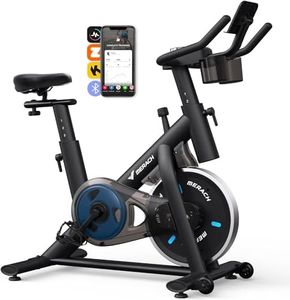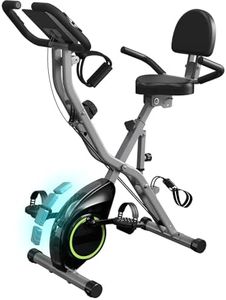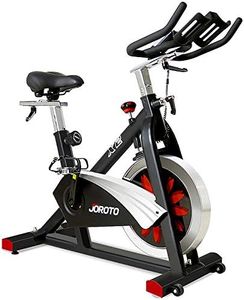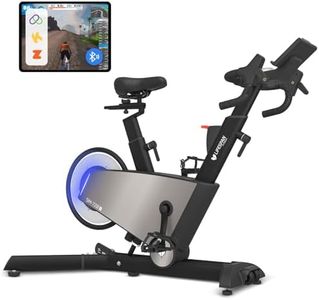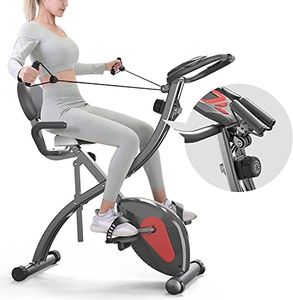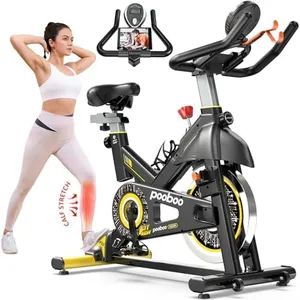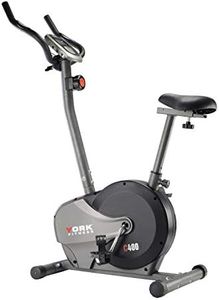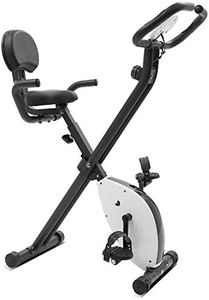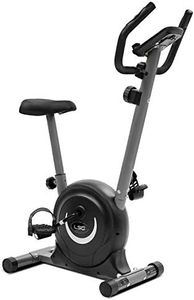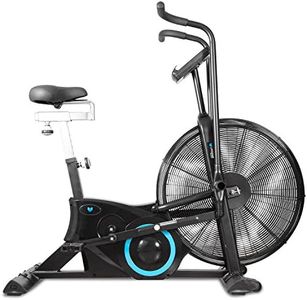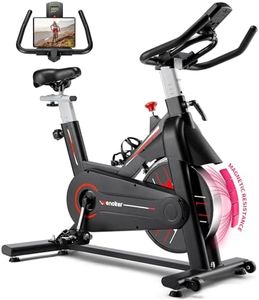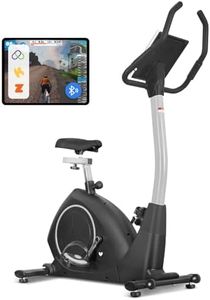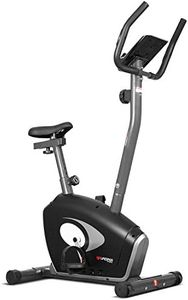We Use CookiesWe use cookies to enhance the security, performance,
functionality and for analytical and promotional activities. By continuing to browse this site you
are agreeing to our privacy policy
10 Best Upright Exercise Bikes
From leading brands and best sellers available on the web.Buying Guide for the Best Upright Exercise Bikes
Upright exercise bikes are a popular choice for people looking to get a convenient and effective cardio workout at home. When trying to find the best one for your needs, it's important to balance comfort, workout variety, durability, and how well the features match your fitness goals. Think about where you'll put the bike, how often you plan to use it, and what will keep you motivated to exercise regularly. A great fit will support your fitness journey and help you stay consistent with your workouts.Resistance LevelsResistance levels control how hard it is to pedal the bike, helping you tailor the difficulty of your workout. More resistance levels mean greater flexibility to increase or decrease intensity as your fitness improves. Basic bikes may have fewer resistance settings suited for beginners, while advanced models offer a wider range for more challenging workouts. Think about your current fitness level and whether you want room to grow; if you want gentle exercise, fewer levels may be enough, but if you plan to push yourself over time, look for a bike with a broader resistance range.
Flywheel WeightThe flywheel is the heavy wheel that keeps the bike pedaling smooth and steady. Heavier flywheels generally provide a smoother and more stable ride, similar to road biking, and are better for higher-intensity workouts. Lighter flywheels make the bike easier to move and are fine for lighter workouts or occasional use. Consider a heavier flywheel if you want a consistent, road-like feeling or are aiming for frequent, intense sessions, but a lighter one is suitable if you prefer lighter activity or need to store the bike away between uses.
Seat Adjustability and ComfortA comfortable, adjustable seat ensures you can ride for longer without discomfort and can help prevent aches or injuries. Most bikes offer up-and-down seat adjustments, but some also move forward and backward. Larger, padded seats increase comfort for longer sessions, while smaller, firmer seats may suit those who prefer a road-bike feel. Choose a bike that allows easy adjustments and feels comfortable to you, especially if multiple people in your home will use it or if you plan on long workouts.
Display Console and Tracking FeaturesThe display console shows useful workout data such as time, speed, distance, calories burned, and sometimes your heart rate. More advanced displays might offer pre-set workout programs, Bluetooth connectivity, or compatibility with fitness apps for extra motivation. Basic displays are fine if you just want to track time and distance, but look for more advanced features if you like structured workouts or want to follow your progress closely.
Size and PortabilityUpright bikes come in various sizes, so it's important to check the bike's dimensions and make sure it fits in your intended space. Some models include wheels for easier movement. Compact, lighter bikes are easier to store or move, great for small spaces or multi-use rooms, while larger bikes may feel sturdier but require a permanent spot. Think about where you'll keep the bike and how much space you have; if you need to move it often, portability becomes more important.
Maximum User WeightThe maximum user weight rating shows the bike’s durability and how well it can support different body types. Bikes with higher weight limits are typically sturdier and more stable. Always check that the bike can comfortably and safely support your weight; if multiple people will use the bike, consider the needs of the heaviest user.
Noise LevelSome bikes are quieter than others due to their resistance system and build quality. Magnetic resistance is usually the quietest and best for shared households or apartments, while older friction-based systems can be noisier. If you're concerned about disturbing others or like to watch TV or listen to music while working out, look for a bike with a reputation for quiet operation.
